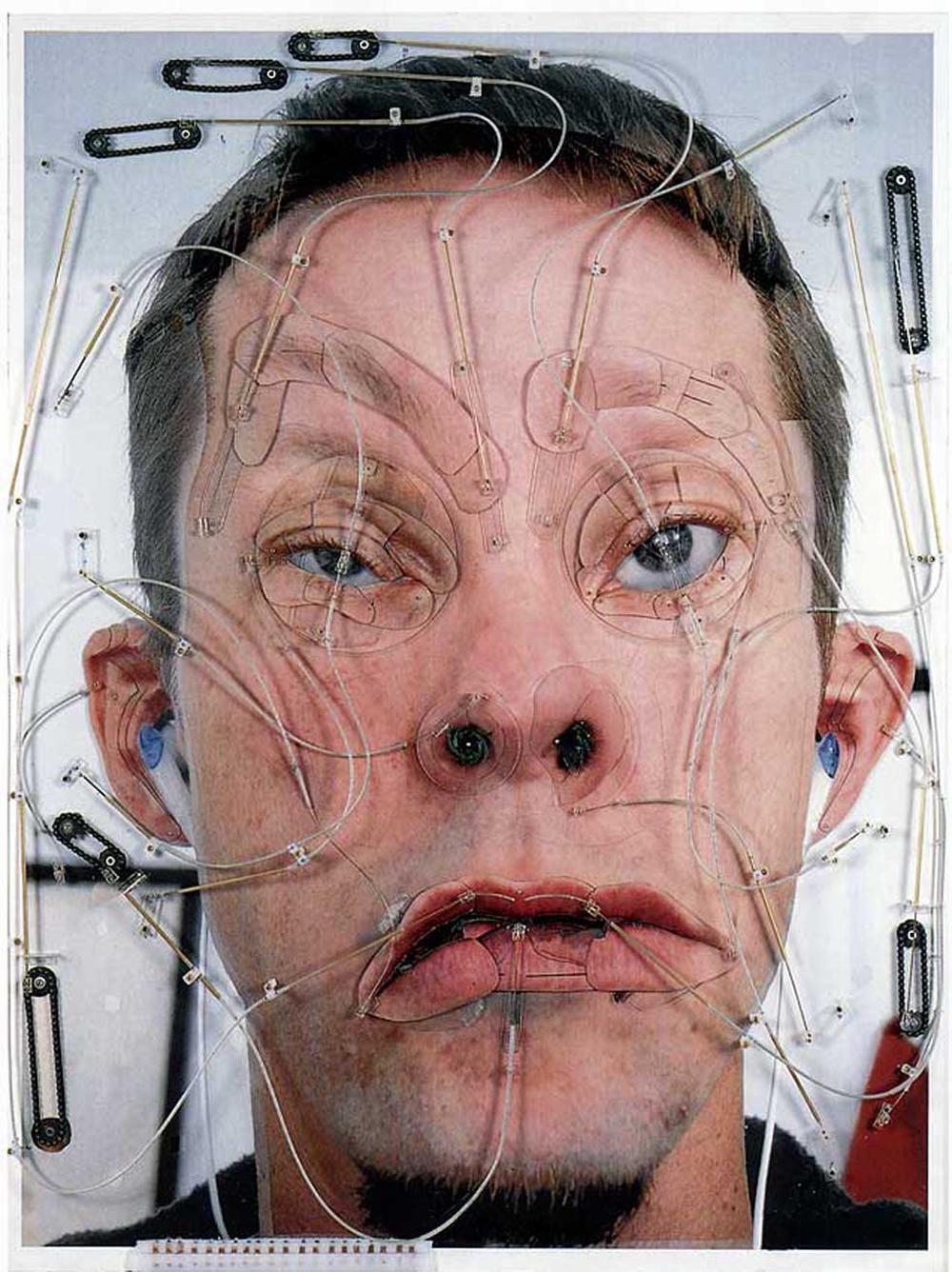Tim Hawkinson. Using His Own Body
There is an economy to Tim Hawkinson’s work. While his handmade, cobbled-together machines don’t appear sleekly efficient, the artist’s recycled materials and use of his own body as a source of investigation are notably utilitarian. In the motorized self-portrait Emoter (2000), a hydraulic mechanism receives electronic signals from light sensors responding to broadcast programming on a nearby television screen to move loosely arranged fragments of a photograph of the artist’s face. As the artist states: “I can’t make most of these faces myself. It’s using my face because that’s readily available, I have exclusive rights to my face . . . it seems just honest to use my own face. . . . Sometimes the manipulation is really slight, depending on what’s coming through the TV channel. When there’s a sporting event with lots of activity, the face can be pretty emotional.”1 While Hawkinson’s body figures prominently in his work and even in his materials—Bird (1997) is a two-inch-tall bird skeleton made of the artist’s fingernail clippings—his examinations are not self-reflective introspection. Rather, they suggest a “sacramental energy,” the employment “of himself in extremis to his work.”2
Tim Hawkinson, in “Time,” season 2 of ART21: Art in the Twenty-First Century, PBS, New York, filmed 2003, video, 13:14 minutes, available at art21.org/watch/art-in-the-twenty-first-century/s2/tim-hawkinson-in-time-segment ↩︎
Howard N. Fox, “Speaking in Tongues: The Art of Tim Hawkinson,” in Tim Hawkinson, ed. Lawrence Rinder (Los Angeles: Los Angeles County Museum of Art; and New York: Whitney Museum of American Art, 2005), 40. ↩︎
